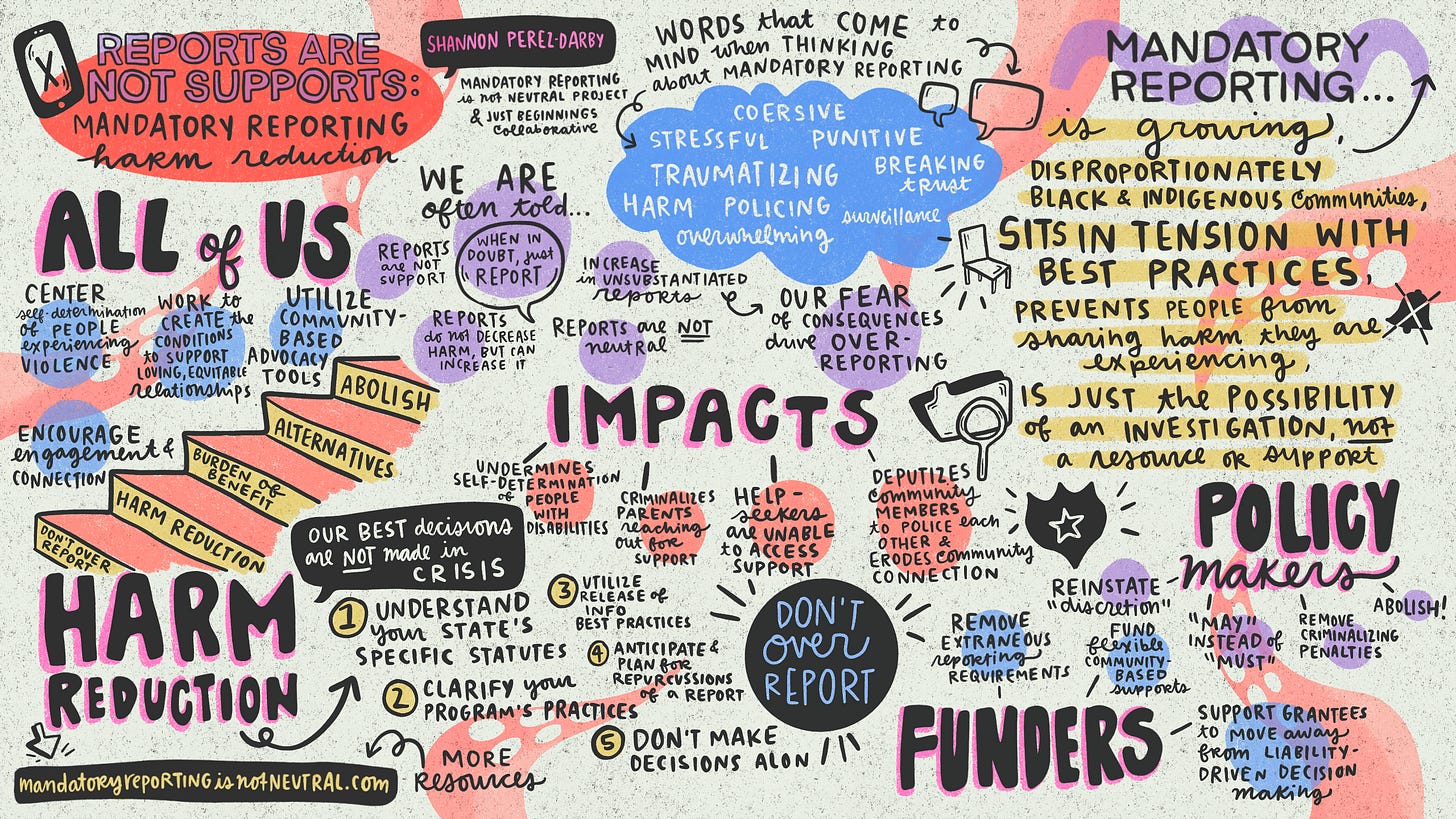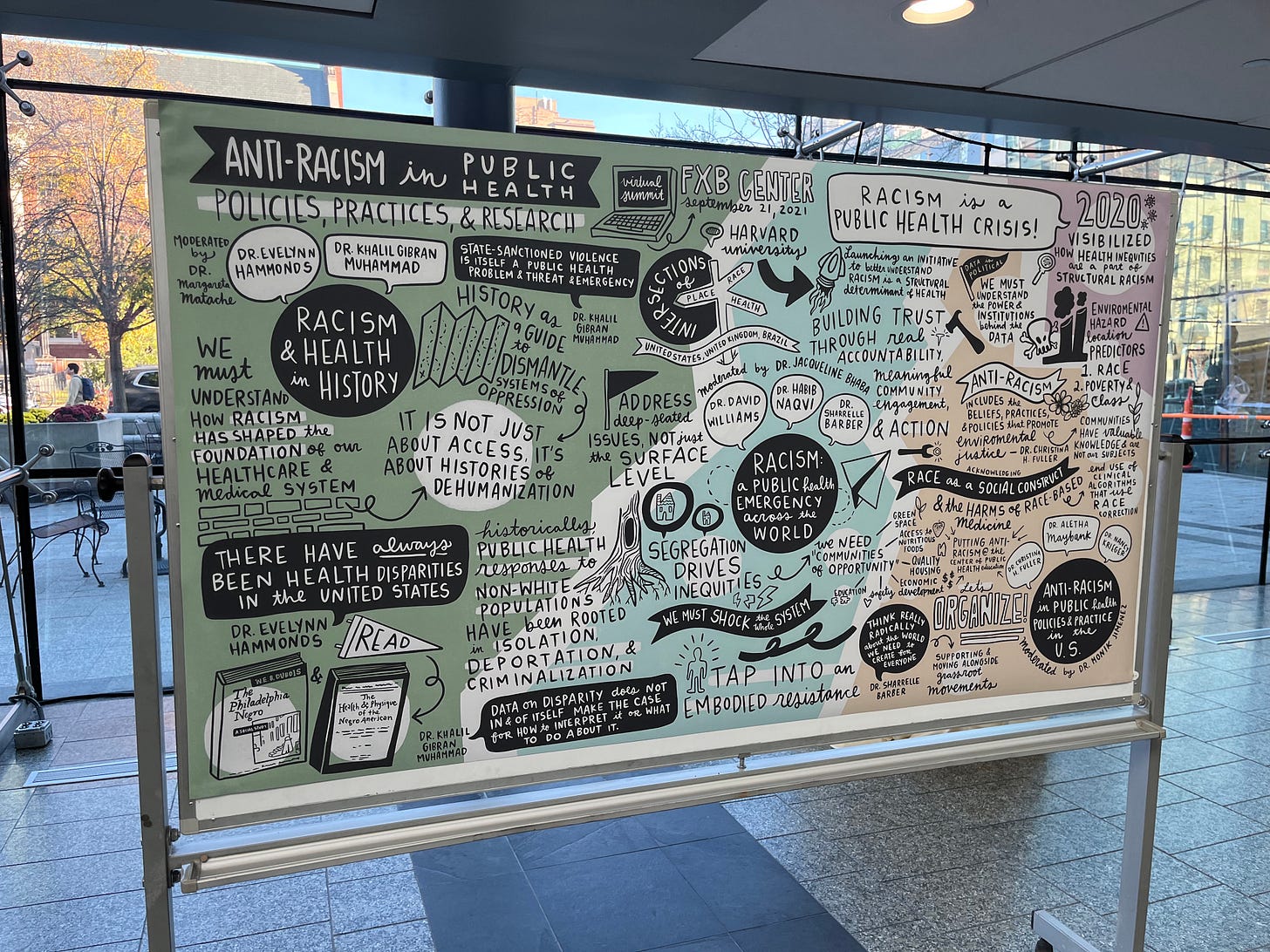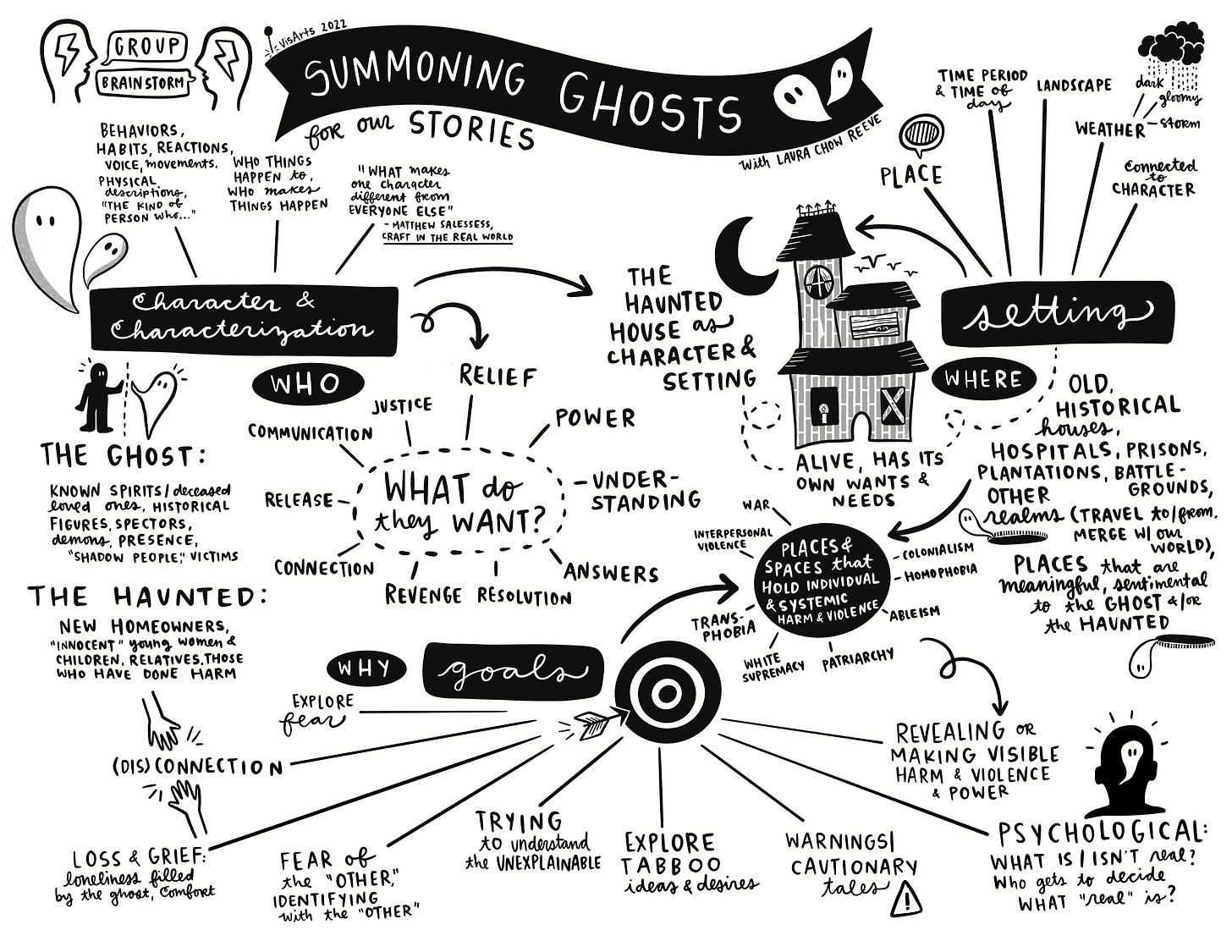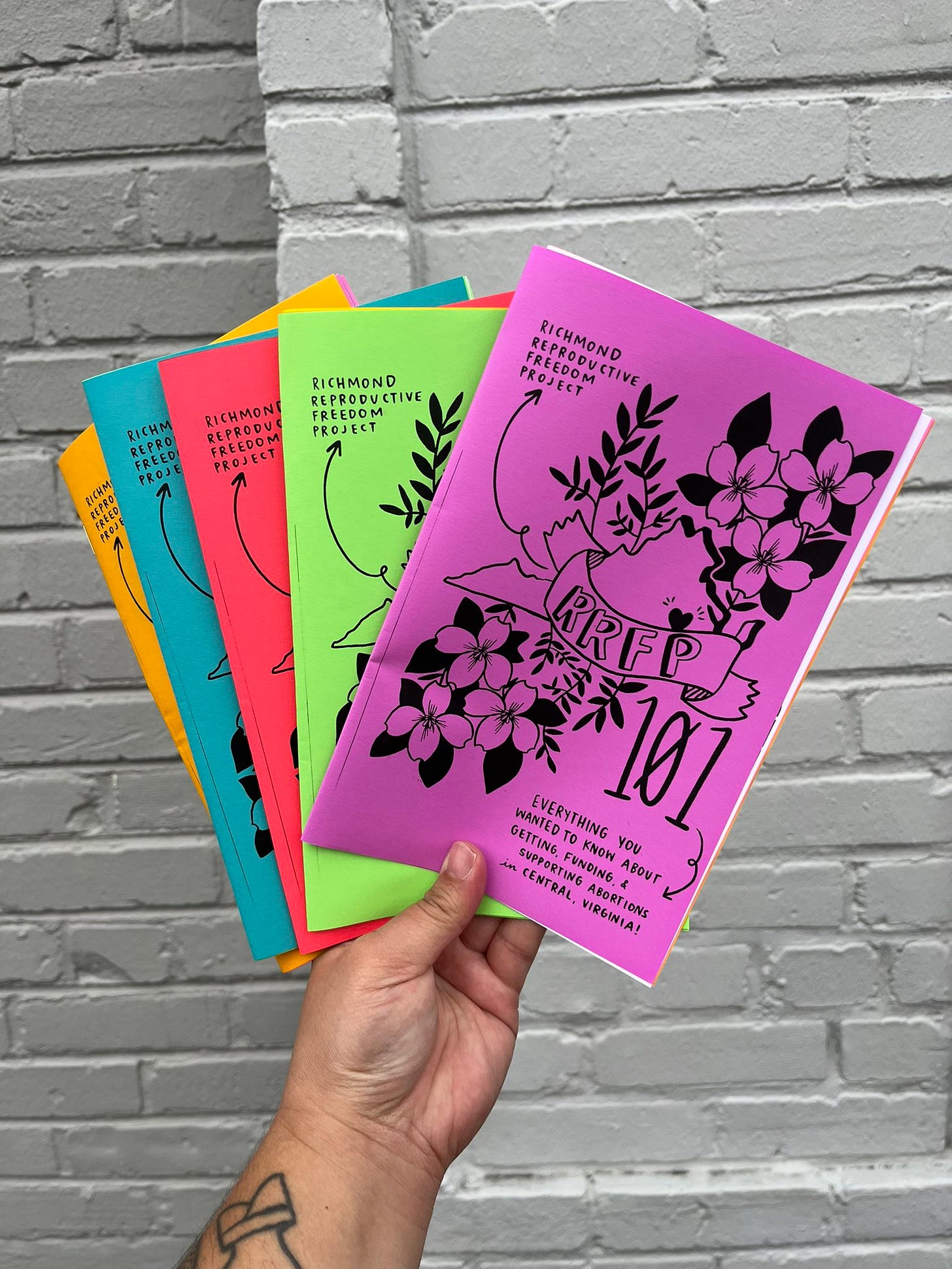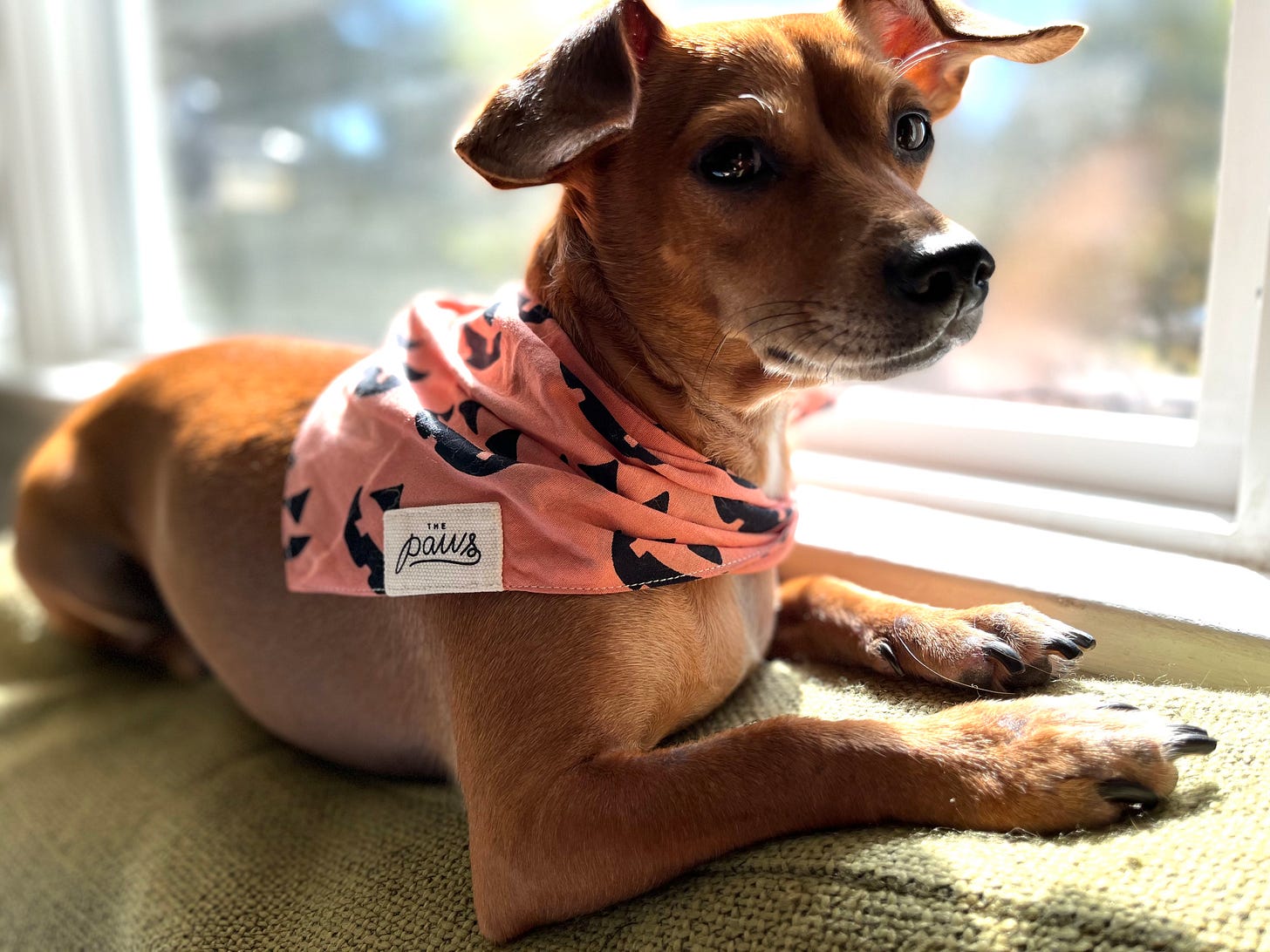4.
mandatory reporting is not neutral, #TwitterDayOfMourning, & ghost stories
Whew, it’s been a few months. I wrote last in July, just as I was leaving my writing studio and heading into deep summer. Now it’s November and the end of the year and my 32nd birthday are looming. I’ve been busy. I still haven’t found the right rhythm with my freelancing/contracting gigs, and I’ve actually started to apply to some full-time jobs to see if something a steadier could create more space/balance in my life. If I were to get one of these jobs, I’d still take on select graphic recording/illustration/design work, especially for folks I’ve already been working with, especially especially for abolitionist projects. We’ll see—I’ve been selective with my applications and many of the jobs I’ve been looking at are competitive. As a tried and true Sagittarius, I also am just feeling a big pull towards change. I get this feeling every 2-3 years it seems— the itch to move or change direction or try something completely new.
drawing
With the busyness has also come some pretty wonderful and deeply energizing collaborations. One that I’ve been most excited by is some illustrative/design work with Shannon Perez-Darby, the Just Beginnings Collaborative, and the Mandatory Reporting is not Neutral Project. Below is a graphic recording from a the “Reports are Not Supports: Mandatory Reporting Harm Reduction” webinar in which Shannon explained how mandated reports do not decrease harm, but actually can increase it. She encouraged folks to take steps to better understand their state’s specific statues, clarify their program’s practices and utilize best practices to stop over reporting as a way to take one step towards an abolitionist horizon in which survivors, especially young people, can reach out for care and support without fears of surveillance, coercion, and state violence.
In addition to the graphic recording, I also created a few graphics for Shannon’s presentation. Below is a .gif that shows the ways in which mandated reporting creates disconnection by deputizing community members/potential care networks and decreases access for people who are experiencing harm.
I also traveled for a job for the first time as Radical Roadmaps/since 2019. Earlier this month, I went to Boston to do some graphic recording/visual engagement with the folks at the The François-Xavier Bagnoud Center for Health and Human Rights for their “Can Reparations Close the Racial Health Gap?” symposium. Below is a graphic recording I did of the 2021 virtual summit on Anti-Racism in Public Health based on a recording; the organizers had it printed to the size of a large whiteboard. It was fun to see my work blown up so big; it felt like I could engage with it as a viewer rather than its creator.
writing
I just sent in my last packet to my Fall 2022 mentor for my low-residency MFA program. This semester I continued to focus on my novel, but made some big changes to the point of view and structure of it that feel energizing. I also had the opportunity to start working on a graphic essay that I hope to grow in a larger project in the future. Working with Mira was a dream and I’m sad it’s already over.
I have some big writing news that I will hopefully be able to announce next month. Not going to lie, there is a part of me that worries if/when Twitter finally collapses it will be hard(er) to share my writing with readers. I’ve heard other writers discuss it as well, including this tweet/discussion started by writer Amber Sparks:

It looks like some folks are moving over to other platforms, including Substack, but I can’t help but notice the ways in which I had imagined announcing/celebrating/sharing certain milestones on Twitter. I know it is not by any means required a writing career, but Twitter has been a space that allowed me to meet and stay connected to other writers, learn about exciting new books on small presses, etc. It looks like Kairos is hosting a “Twitter Day of Mourning” today, Thursday, November 17th as a “day for making sense of a Musk-owned Twitter, talking about the future of our online spaces, and highlighting who actually makes Twitter successful: users”


Either way, stay tuned for that *news* I promised in the next month or so.
teaching
I just finished up teaching my fall writing class at VisArts. This time, I taught a new class on writing ghost stories. In our first session, we did a group brainstorm on the who/where/why of ghost stories. I illustrated the notes for my students after there was a request, so I’m sharing them with you now:
Do you agree? Disagree? See something we missed? I’d love to hear more about what folks think about ghost stories— why you are drawn to them, why you read them, why you write them. What’s one of your favorites?
If I teach this class again, I think I’m going to request copies of Tiny Nightmares for everyone. I forgot about the anthology until mid-way through the class, but I loved diving into it with participants.
Otherwise, I’m taking a break from teaching as I figure out what’s next. I love teaching generative writing classes, but also want to think of new ways to approach teaching creative writing in community contexts. I’d like to teach a workshop but hesitate because of the commitment and work outside of class that they can require. Do folks have any tips?
reading
A few things I’ve read since we last spoke—
Novels:
Disappearing Earth by Julia Phillips: A novel that revolves around the disappearance of two young sisters in Russia’s Kamchatka peninsula. Set over the year that follows their kidnapping, each chapter focuses on different woman from the area who is experiencing her own struggles with relationships, family, grief, and desire. While each story is connected to or mentions the disappearance of the sisters in different degrees, the novel’s structure feels like it’s in orbit around the event.
The Atmospherians by Isle McElroy: A novel about masculinity, power, and redemption. Centered around Sasha, an aspiring influencer who is harassed, shamed and shunned after one of her online harassers publicly commits suicide, and her childhood friend Dyson, a failed actor who has struggled with disordered eating since they were children. After Sasha loses everything she has worked for, Dyson shows up on her doorstep and asks her to join him in starting a cult to reform toxic men.
A Visit from the Goon Squad by Jennifer Egan: A novel-in-stories that revolves around Bennie an “aging former punk rocker and record executive” and Sasha, a “passionate, troubled young woman he employs.” Both music and time are central to the novel— “time’s a goon,” says Scotty, a high school friend of Bennie’s and the lead guitarist of their band The Flaming Dildos. And it is the way Egan plays with time, both between and in chapters that felt most compelling: how she reveals the duality of time’s cruelty and redemption, shows the ways in which it entangles us to each other, and emphasizes the way grief grabs distorts and grabs hold of it.
Graphic/Illustrated:
The Faggots & Their Friends Between Revolutions by Larry Mitchell: Written by Larry Mitchell and illustrated by Ned Astra in the 1970’s, this book was originally self-published and is said to have been gifted and shared in/around queer communities through DIY, xeroxed, and well-worn copies before being republished by Nightboat Books in 2019. Described as a “fairytale-cum-manifesto” by Jennifer Krasinski in Artforum, the book defies categories, binaries, and borders while instead embracing collectivism, pleasure and keeping “each other alive any way we can ‘cause nobody else is goin’ do it.”
Laura Dean Keeps Breaking up with Me by Mariko Tamaki : A beautifully illustrated graphic YA novel about first love, friendship, sexuality, and learning how to build and support healthy relationships as a young queer person. The narrative is framed in letters written by Freddy Riley to Anna Vice, an advice columnist, asking how to navigate an on-and-off relationship with Laura Dean, the girl who keeps reeling her in and then breaking her heart over and over again.
Marbles: Mania, Depression, Michelangelo, and Me: A Graphic Memoir by Ellen Forney : When I was reading Marbles, I was thinking a lot about the structures of graphic memoirs/nonfiction books. Below is my attempt at mapping what I saw in this one.
learning
I’ve been collaborating with staff and volunteers at the Richmond Reproductive Freedom Project on creating zines to share information on abortion access and reproductive justice across Virginia. Our first zine was an “RRFP 101,” and we have some big/fun ideas for future “101” zines.
I’ve also been doing some deep Transformative Justice study and practice in and with community over the past few months. Here are three resources that have been crucial to that work:
Fumbling Towards Repair: A Workbook for Community Accountability Facilitators
Beyond Survival: Strategies and Stories from the Transformative Justice Movement
Creative Interventions Toolkit: A Practical Guide to Stop Interpersonal Violence
scouting
Finally, here is Scout in all her autumnal glory sometime in October.
Thanks, as always, for sticking around and reading. Sending love to you and yours.

